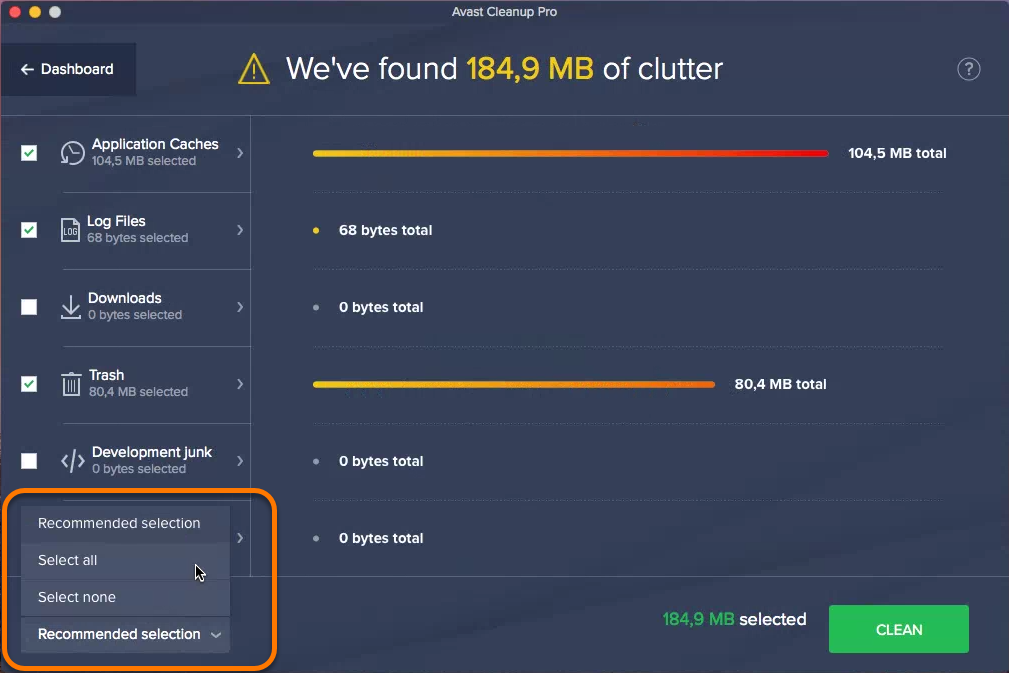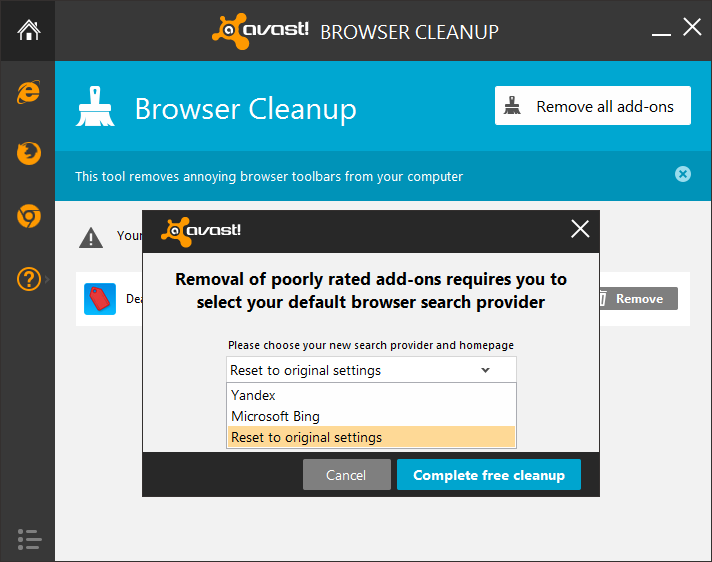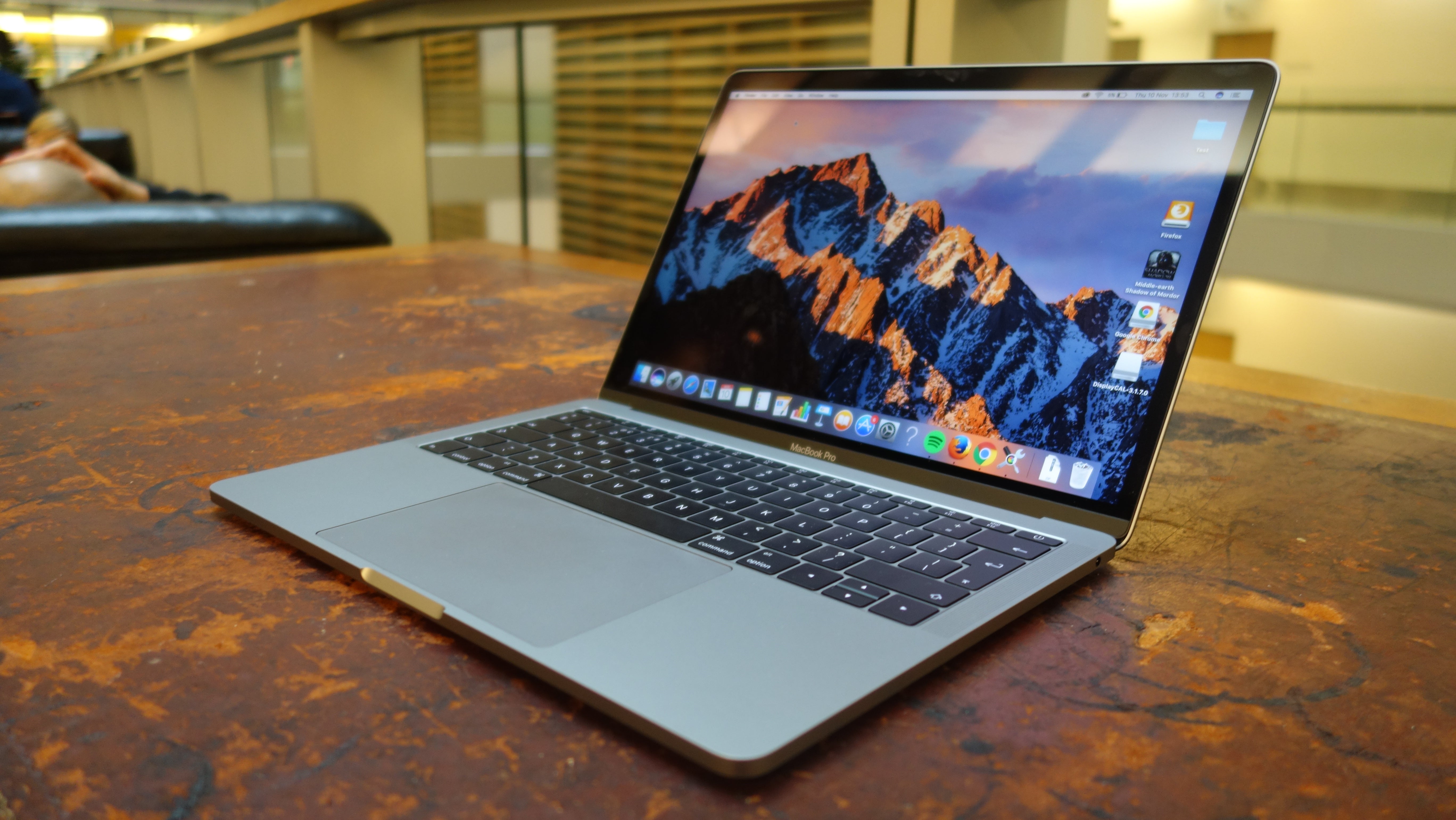Removing Avast Cleanup For Mac
Mac Auto Cleaner is promoted on its official website as number one cleanup utility for Mac. It asserts to create protective shield to secure the system from malware, adware, ransomware, Trojans, phishing codes, and other malicious elements. Mac Auto Cleaner claims to instantly detects and remove threats through its real-time scanning feature.
- Free Download of Avast Clear Uninstall Utility 2018 – Avast Antivirus Removal Tool. Avast Uninstall Utility is available only for Windows, unfortunately not for Mac OS X. It is a completely free tool for removing Avast antivirus and all it’s leftovers (registry records) from your system.
- Introducing Avast Cleanup Pro for Mac Our software performs some much-needed housecleaning on your Mac. It restores lost disk space by removing invisible or long-forgotten junk and detecting duplicates that waste even more disk space.
- I have tried for long time to uninstall cleanup from my Mac. Which I installed the other day. A try message came up. I have not payed anything.
During our analysis, it turned out that Mac Auto Cleaner is linked to previous rogue programs such as Mac Auto Fixer, Mac Heal Pro, and many more. It appears that Mac Auto Cleaner is just a re-branded of previous variants. As you can see, image below shows that graphical user interface of this recent product is identical to its former versions. Scan method and even ways to persuade victims in buying the full copy of Mac Auto Cleaner is impossible to tell apart. It uses scan-and-detect scheme that aims to deceive users with the current troubled status of the computer.
Avast Cleanup For Mac
Just as we always advise, immediately remove any rogue applications as it can cause further harm when left running on Mac system. On our guide below, we included manual method as well as automatic procedure, which require scanning the computer with effective anti-malware tools. Execute the guide in exact order to ensure complete removal of Mac Auto Cleaner and all malicious objects associated with it.

Uninstall Avast Free Mac Security 2015 correctly and thoroughly First way – manually remove Avast Free Mac Security 2015 When there is a need to remove the application on the computer, the Mac OS X provides its own removing feature that enable you to manually wipe it out,: dragging the program on Applications folder to the Trash, and it is also working for uninstalling Avast Free Mac Security 2015 on your Mac. Avast Clean Up is a PC Optimization tool which cleans up your PC and speeds up your computer. If you will get avast cleanup activation code free then sure it will amazing. This is available in all the variants of Avast Antivirus Solutions; for example, 2015.10.3.2224+ versions. Question: Q: Removing Avast Cleanup from Mac. Finely I tried restarting my MacBook Pro in Safe mode. I could then delete the Avast Cleanup application. However, there are many files left in the library, some of which cannot be deleted because they are owned by the system.
Procedures to Remove Mac Auto Cleaner
This section contains complete instructions to assist you in removing potentially unwanted program from Mac system.
Procedures published on this page are written in method that can be easily understand and execute by Mac users.
Step 1 : Quick Fix - Scan the System with Combo Cleaner
Combo Cleaner is a trusted Mac utility application with complete antivirus and optimization features. It is useful in dealing with adware and malware. Moreover, it can get rid of unwanted program like Mac Auto Cleaner. You may need to purchase full version if you require to maximize its premium features.
1. Download the tool from the following page:
2. Double-click the downloaded file and proceed with the installation.
3. In the opened window, drag and drop the Combo Cleaner icon onto your Applications folder icon.
4. Open your Launchpad and click on the Combo Cleaner icon.
5. Wait until antivirus downloads it's latest virus definition updates and click on 'Start Combo Scan' to start removing Mac Auto Cleaner.
6. Free features of Combo Cleaner include Disk Cleaner, Big Files finder, Duplicate files finder, and Uninstaller. To use antivirus and privacy scanner, users have to upgrade to a premium version.
Proceed with the rest of the removal steps if you are comfortable in manually removing malicious objects associated with the threat.
Step 2 : Quit Mac Auto Cleaner Process
Before proceeding with the steps below, please close Mac Auto Cleaner window if in case it is open.
1. Go to Launchpad, Utilities folder, open Activity Monitor.
Remove Avast Cleanup Mac
2. Choose All Processes from the upper right corner of the window.
3. Under Process Name column, look for Mac Auto Cleaner. Click the name to select the malicious process.
4. Next, click the Quit Process button located in the upper left corner of the window.
5. When prompted, click on Force Quit.
6. You may now delete or remove files that belongs to Mac Auto Cleaner. Proceed to the next steps.
Step 3 : Delete Mac Auto Cleaner Login Items
Some malware also installs login item into compromised account under System Preferences. This object automatically runs Mac Auto Cleaner during user log in.
1. Go to Apple menu and choose System Preferences.
2. Select Users & Groups from the preferences window.
3. You may need to Unlock this area in order to make changes. Click on the Lock icon on lower left corner of the window.
4. Next, select user account that runs Mac Auto Cleaner.
5. Click on Login Items tab.
6. Select Mac Auto Cleaner from listed entries and click on the minus [-] button and confirm your actions. Please see image below for reference.
Step 4 : Delete Malicious Files that have installed Mac Auto Cleaner
1. Select and copy the string below to your Clipboard by pressing Command + C on your keyboard.
~/Library/LaunchAgents
2. Go to your Finder. From the menu bar please select Go > Go to Folder..
3. Press Command + V on your keyboard to paste the copied string. Press Return to go to the said folder.
4. You will now see a folder named LaunchAgents. Take note of the following files inside the folder:
- machlpr.app
- MacAutoCleaner.agent
- com.mactasks.plist
If you cannot find the specified file, please look for any unfamiliar or suspicious entries. It may be the one causing Mac Auto Cleaner to be present on your Mac. Arranging all items to see the most latest ones may also help you identify recently installed unfamiliar files. Please press Option + Command + 4 on your keyboard to arrange the application list in chronological order.
5. Drag all suspicious files that you may find to Trash.
6. Repeat Step 2, numbers 1-5 procedures on the following folder (without ~):
/Library/LaunchAgents
7. Please restart the computer.
8. Open another folder using the same method as above. Copy and Paste the following string to easily locate the folder.
~/Library/Application Support
9. Look for suspicious objects or folders with the following names and drag them to the Trash.
- MAC
- MacAutoCleaner
- Machlpr
10. Repeat procedures 8 and 9 on the following folders if necessary.
~/Library/Caches
11. Go to your Finder and open the Applications Folder. Look for subfolders with names similar above and drag them to Trash.
12. Lastly, please Empty your Mac's Trash bin.
Step 5 : Run another Scan using MBAM Tool for Mac
1. Download Malwarebytes Anti-malware for Mac from this link:
2. Run Malwarebytes Anti-malware for Mac. It will check for updates and download if most recent version is available. This is necessary in finding recent malware threats including Mac Auto Cleaner.
3. If it prompts to close all running web browser, please do so. Thus, we advise you to PRINT this guide for your reference before going offline.

4. Once it opens the user interface, please click on Scan button to start scanning your Mac computer.
5. After the scan, Malwarebytes Anti-malware for Mac will display a list of identified threats, Mac Auto Cleaner is surely part of it. Be sure to select all items in the list. Then, click Remove button to clean the computer.
6. You may now restart the computer.
Yes, Macs can get malware. Beyond traditional viruses, worms, and Trojans, there’s now a thriving ecosystem of adware and spyware programs that bombard you with ads and spy on your web browsing, just like on Windows.
Macs do have some integrated protection against malware, but it isn’t perfect. Crucially, that protection against malware doesn’t block all the adware and spyware bundled with application downloads.
Use Malwarebytes for Mac
RELATED:Mac OS X Isn’t Safe Anymore: The Crapware / Malware Epidemic Has Begun
Malwarebytes makes well-regarded security utilities for Windows. Malwarebytes originally expanded into the Mac security software arena by purchasing and rebranding a popular application named “Adware Medic” that we and others have used successfully in the past.
There are now two versions of Malwarebytes for Mac, a free version and a premium version. The standard scanner that checks for malware on your system and removes it is free. Anyone can manually initiate a scan and remove malware with Malwarebytes for Mac without spending a penny. The Malwarebytes Premium features that will monitor your Mac for malware and spyware, prevent infections before they occur, and automatically download updates do cost money, but Malwarebytes does provide a 30-day free trial.
If you want to remove malware, spyware, and other garbage software from your Mac, we recommend you download and run Malwarebyes. The free version is fine if you just want to check for and remove malware. If you want something that runs in the background, automatically scans your downloads, and monitors your system, you’ll want the paid version.
We’ve been happy with Malwarebytes on Windows for years and recommend it, and the Mac version also seems solid. We recommended it back when it was just an “Adware Medic” tool that could only manually scan your system for malware, and we’re happy the automatic protection features are now available for people who want them.
How to Avoid Malware on a Mac
RELATED:How to Protect Your Mac from Malware
Yes, obnoxious junk software is still a problem on a Mac. Macs do have an anti-malware feature known as “XProtect” or “File quarantine”, but it only blocks a handful of the most nasty pieces of malware after they’ve become widespread. It won’t necessarily block anything new, and it won’t stand in the way of all the adware and spyware out there. You need to follow good online safety practices to avoid malware on a Mac, just like you do on a Windows PC.
Much of the nastiest adware arrives the same way it does on Windows, via junkware-packed installers from application-downloading sites like download.com or via shady advertisements that push you to an unofficial, tainted installer. Get your applications from the Mac App Store or the developer’s website. Avoid running unsigned software—that means only allowing apps downloaded from the “App Store and identified developers”.
Unlike on Windows, there’s no Add/Remove programs window where you can go to see what’s installed and quickly uninstall it on a Mac. On Windows, most of the “legal” crapware allows you to uninstall it from here. On a Mac, it can be tough to know how to uninstall this junk. Malwarebytes should be able to find and uninstall this junkware automatically, which is why it’s so useful.
What About Full Mac Antivirus Programs?
Quite a few antivirus companies are now also creating (and selling) full antivirus programs for macOS. These applications are similar to their Windows equivalents, featuring full background-scanning of all the applications you run and files you access as well as other features. Malwarebytes Premium for Mac now functions in this way, too.
We’ll be honest here—we’re not completely sure what to recommend if you’re looking for a more traditional antivirus program. There haven’t been as many tests that compare Mac antivirus software as there have for Windows antivirus software. Malwarebytes for Mac is a great quick removal tool and now offers automatic scanning features if you want them. It will remove most of the obnoxious software out there, which makes it our main pick. On Windows, most of the antivirus programs won’t even remove this obnoxious adware and spyware (called “potentially unwanted programs” or “PUPs”), so we’re not even sure a full antivirus would even be as good as Malwarebytes at battling the most entry points.
If you do stick to the Mac App Store and keep your software updated, you’re probably fine. On the other hand, if you download a lot of software from the web and potentially even bypass your Mac’s protections to install unsigned applications from unknown developers, an antivirus with full background scanning might be a better idea. However, like on a Windows PC, an antivirus that’s always scanning in the background can make your Mac a bit slower and drain battery life.
We recommend Sophos Home for Mac as the top free antivirus for Mac. AV-TEST gave it good grades and it doesn’t try to install any additional software on your PC. It just requires you create a free Sophos account before you can download it. Give it a try if you’re looking for a free, full-featured antivirus with on-demand scanning. If your Mac is already infected, this application can perform a full system-scan for malware, just as they can on Windows.
“Macs don’t get malware” and “you don’t need antivirus on a Mac” are old pieces of advice that aren’t necessarily true anymore. Macs are vulnerable to malware. For example, the Flashback Trojan at one point infected over 600,000 Macs around the world. Macs also now have a problem with adware and other junkware provided in software installers, just as Windows does.
Malwarebytes for Mac is a solid tool in any Mac user’s toolkit. Full antivirus applications aren’t necessarily as mandatory as they are on Windows yet, but you might want them if you download a lot of applications from the web and are particularly worried.
READ NEXT- › What Should You Do If You Receive a Phishing Email?
- › Why Do You Have to Log In to Your Home PC, Anyway?
- › The Best New Features in Android 10, Available Now
- › How to Use the chown Command on Linux
- › What’s New in Windows 10’s 20H1 Update, Arriving Spring 2020
